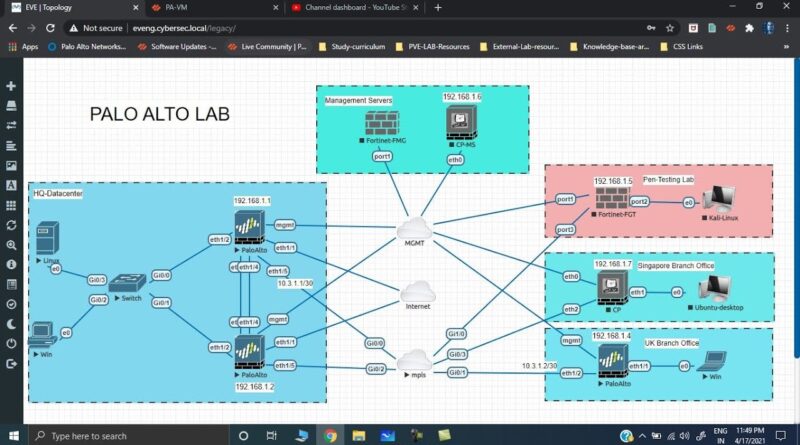


- #Palo alto in eve ng serial#
- #Palo alto in eve ng android#
- #Palo alto in eve ng software#
- #Palo alto in eve ng professional#
- #Palo alto in eve ng simulator#
#Palo alto in eve ng professional#
In the case of EVE-NG, it comes in both free community edition and professional paid edition. It does follow a traditional client/server application model, but the best part is that the server component is easy to configure, deploy and maintain.
While comparing GNS3 vs EVE-NG, we find that GNS3 is a free, open-source community that has built a well-documented piece of software. #Palo alto in eve ng serial#
When it comes to the setbacks then VIRL faces them in the form of base resource optimum utilization of VIRL server appliance as well as the shortage of support when it comes to the serial interfaces.īoth the features are better with GNS3 and EVE-NG when compared with VIRL.VIRL is easier and up with more features when it comes to the configuration automation while comparing it with GNS3 or EVE-NG.
#Palo alto in eve ng software#
With the other network emulators, these software images are only accessible via the service contract or a program conducted by a college. With the annual subscription, one can avail access to VIRL for the network device software images.It comes in both free community edition and professional edition with a fee payable annually.
#Palo alto in eve ng simulator#
Emulated Virtual Environment Next Generation or EVE-NG is a form of multi-vendor virtual network simulator that has been developed for individuals and for smaller businesses. It is highly effective in emulating enterprise networks. Virtual Internet Routing Lab or VIRL is a Cisco invented proprietary virtual network emulator that is highly regarded by individuals and educational institutions. It is a Python-based platform and supports Cisco 1700, 2600, 2691, 3600, 3725, 3745, as well as 7200 router platforms. GNS3 or Graphical Network Simulator-3 is an open-source, free server/client interface meant for virtualization and network emulation. Let us understand them briefly prior to drawing the lines of comparison among them. But when it comes to opting between the finest virtual simulation interfaces, then the comparison is ought to be between GNS3 vs Eve-NG vs VIRL. It can be helpful in aligning certain business applications to groups of users in specific departments, providing visibility into usage and security violations.There is a range of network emulators that one can opt for in order to access premium quality virtual network simulation. A powerful use case for User-ID would be when an unexpected application is identified on the network by the firewall, User-ID can also help you to identify exactly who is the user of the application. To summarise, User-ID can be used to add an extra layer of granularity to your security policies. Any web traffic (HTTP or HTTPS) can be matched to an authentication policy which then forces the user to authenticate via a Captive Portal authentication method. 
This enforces security by allowing only users which have been allowed access to a resource to obtain that access. In the event a user cannot be mapped to an IP address, for example as the client is not supported by your domain server, features such as Captive Portal and authentication policies can be implemented to authenticate a user before they are allowed access to a specific resource.
Authentication Policy and Captive PortalĬhoosing syslog as an example, a network which is already utilising network services which authenticate users (for example 802.1x or other NAC mechanisms) can send syslog messages to Palo Alto firewall which contain information about login and logout events, using User-ID to parse the messages and use this information to map IP addresses to users. Multiple techniques can be selected to map a users identity to an IP address, some of which include: Without the implementation of User-ID, we would implement a security policy based on an IP address or range, however implementing User-ID means that we can permit or deny access to a resource based on a users permissions or group. The User-ID feature allows firewall administrators to enforce user-based and group-based security policies. The feature integrated Palo Alto firewalls with a number of enterprise directories, two of which are Active Directory and Open LDAP. The use of User-ID allows for better visibility, control and logging/reporting. #Palo alto in eve ng android#
It can identify users across a wide range of operating systems and access methods such as Windows, MacOS, iPhone, Android and Linux to name a few. User-ID is a feature which can be utilised on the Palo Alto firewalls, which allows firewall administrators to identify users who are passing traffic through your network boundaries. In this blog post I am going to take a deeper look at one of the features offered by Palo Alto Networks on their Next-Gen Firewalls, namely User-ID.







 0 kommentar(er)
0 kommentar(er)
